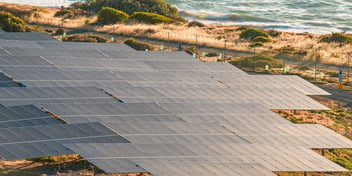Wastewater treatment hits the roof
With water shortages just a few decades away, it’s vital that solutions are developed as quickly and efficiently as possible, to provide clean, reliable drinkable water.
More than five billion people could be facing water shortages in 2050 as a result of climate change, increasing water demand and population growth. While there are desalination options available at the moment, they are not the most energy-efficient solution, resulting in significant carbon dioxide emissions.
Researchers at Edith Cowan University (ECU) seem to have found a solution — a mini-desalination system, powered entirely by the sun that can fit on a residential roof. The prototype system can purify grey water from washing machines, showers and dishwashers, turning it into pure, drinkable water.
ECU School of Engineering researcher Dr Abdella Shafieian helped to create the project as part of his PhD. He said the system addresses the challenge facing traditional methods of wastewater treatment and desalination — the energy required.
“Our efficient system uses solar membrane technology to harness the energy from the sun to purify the water,” he said.
“It works by using the sun’s energy to heat water, which then passes through a membrane as a vapour, before it is cooled and condensed back into liquid water, leaving any impurities behind. The only energy used in the system is by a series of small pumps, which require less than 90 W to run — less than most standard light bulbs.”
As an added bonus, the system can also desalinate seawater into drinkable water, treating around 30 L of water per square metre of membrane in summer and approximately 20 L in winter.
With up to two thirds of the world’s population facing water scarcity by 2025, School of Engineering Associate Dean of Research Associate Professor Mehdi Khiadani said it is vital that solutions are developed.
Khiadani said that while the system is small enough to be mounted on residential rooftops, it can easily be scaled up to provide drinking water to large community and commercial projects.
“It is often difficult and expensive to deliver water to remote and regional towns in Australia who don’t have access to safe drinkable water. So instead of us having to truck water in, this system could provide these towns with a reliable back-up water supply,” he said.
Khiadani said he was keen to work with investors who could help develop the technology into a commercial product.
“Just as rooftop solar panels have changed the way we generate electricity, the system we have developed has the potential to revolutionise the way we provide clean water to households and businesses,” he said.
And just like rooftop solar panels, the system can easily be integrated into existing homes, meaning no further construction is required. However, the project will need help.
“Just like how subsidies underpinned the rapid adoption of rooftop solar, government assistance may be required to encourage people to adopt this new technology as well,” Khiadani said.

